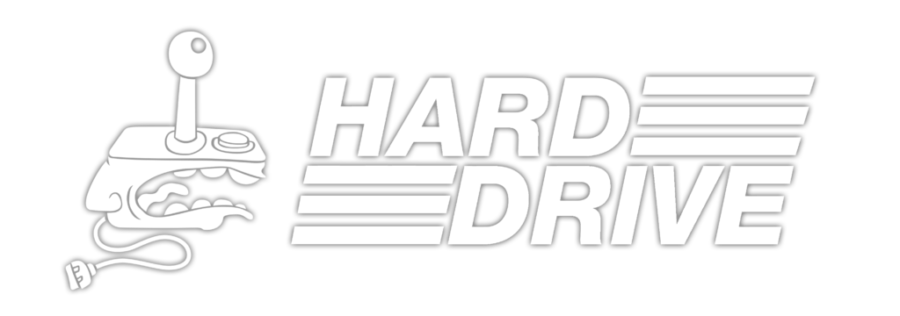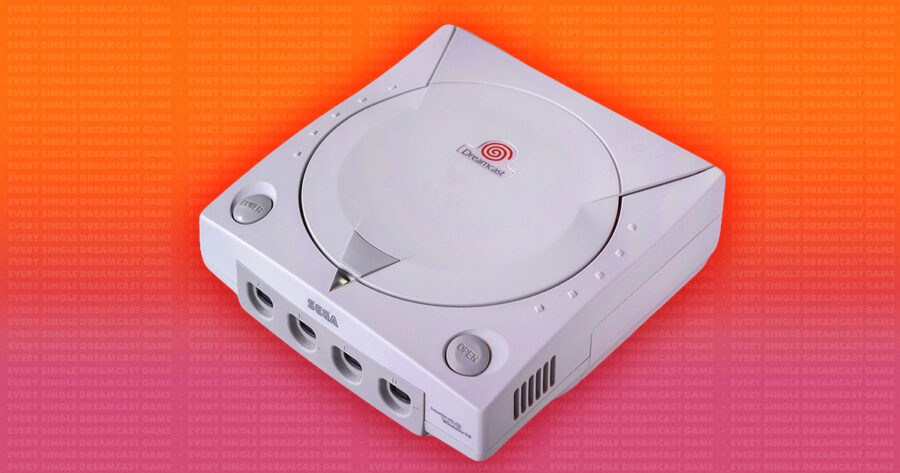#89. Industrial Spy
June 1, 2000
HuneX
UFO Interactive Games
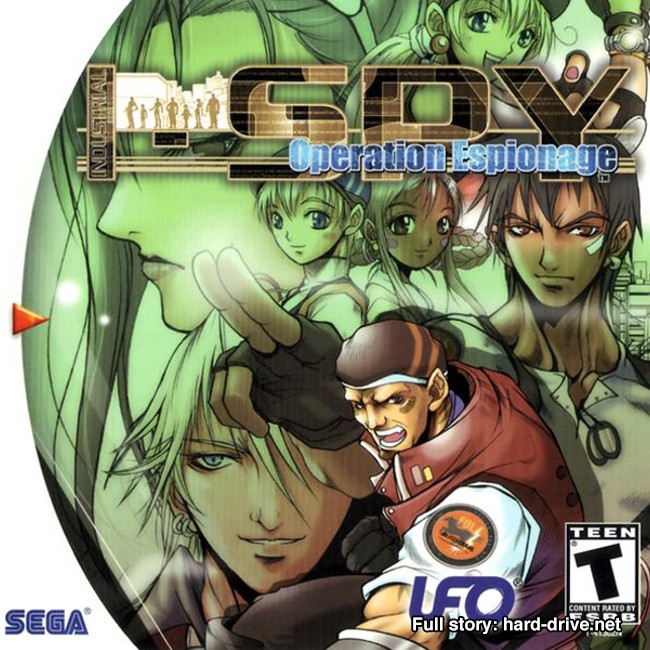 Five Nights at Freddy’s is a horror indie game where your player character is a lowly security guard watching over the late-night happenings at a children’s restaurant. The main focus of the game is monitoring the restaurant through TV screens, controlling certain contraptions remotely, and trying to stay alive while being assailed by child-ghost-possessed animatronics. Industrial Spy: Operation Espionage has surprisingly a lot in common with FNaF: just replace the evil animatronics with security guards and contraptions with living people. You’re tasked with guiding your group through a mission, but you only get to watch what’s happening. For instance, the first mission involves sneaking into an art museum to steal a painting. While you have no control over characters you can direct them where to go and what to do to complete the mission.
Five Nights at Freddy’s is a horror indie game where your player character is a lowly security guard watching over the late-night happenings at a children’s restaurant. The main focus of the game is monitoring the restaurant through TV screens, controlling certain contraptions remotely, and trying to stay alive while being assailed by child-ghost-possessed animatronics. Industrial Spy: Operation Espionage has surprisingly a lot in common with FNaF: just replace the evil animatronics with security guards and contraptions with living people. You’re tasked with guiding your group through a mission, but you only get to watch what’s happening. For instance, the first mission involves sneaking into an art museum to steal a painting. While you have no control over characters you can direct them where to go and what to do to complete the mission.
If FNaF is too scary for you, you wish you were Futaba from Persona 5, or staring at a monitor to stare at monitors sounds fun, I Spy is a surprisingly engaging but frustrating-to-control title. The characters are fun anime-staples and the heists are great little puzzles to work out. Check it out if you can. — J. Ruggiero
#88. Speed Devils
October 14, 1999
Ubisoft Montreal
 Speed Devils is an arcade-style racer that was actually designed for PC’s and Dreamcast, so it plays a little better than the Cruis’n USA’s of the world did on a console. You won’t confuse it for a top tier racing title, but since it was designed for players at home in mind, the game is refreshingly free of the checkpoints that were a staple of arcade racing ports from this era, and for its genre there’s a decent amount of modifications and fun new cars to buy. It’ll all still wear thin faster than a Gran Turismo or Metropolis Street Racer, but it’s worth seeing all the fun shit in here. The available cars are very fun, and I really liked how there’s a bunch of different ways to make money besides just placing first, another thing that keeps the races engaging throughout. Heck, this game even has a gambling system a little bit like MSR’s, another little detail that adds to the experience. But not my favorite one.
Speed Devils is an arcade-style racer that was actually designed for PC’s and Dreamcast, so it plays a little better than the Cruis’n USA’s of the world did on a console. You won’t confuse it for a top tier racing title, but since it was designed for players at home in mind, the game is refreshingly free of the checkpoints that were a staple of arcade racing ports from this era, and for its genre there’s a decent amount of modifications and fun new cars to buy. It’ll all still wear thin faster than a Gran Turismo or Metropolis Street Racer, but it’s worth seeing all the fun shit in here. The available cars are very fun, and I really liked how there’s a bunch of different ways to make money besides just placing first, another thing that keeps the races engaging throughout. Heck, this game even has a gambling system a little bit like MSR’s, another little detail that adds to the experience. But not my favorite one.
Like California Speed on the N64, Speed Devils livens things up with stellar track design that sees all kinds of fun surprises jumping out at you. I love this shit. The Hollywood level will have you steering around dinosaurs, sharks, and giant apes on the backlot, for example. It’s a treat, and it helps the game feel less redundant. It’s still plenty redundant, but the little bits of personality help. Now hopefully no developer of this game disagrees with this assessment on Twitter like last time! — M. Roebuck
As someone who worked on this, there is no way it belongs in the top 100. https://t.co/BRg0tk0P6b pic.twitter.com/XFHmcRQbOS
— Will Kerslake (@wkerslake) May 16, 2023
#87. Virtua Fighter 3tb
October 19, 1999
Genki
Sega

I want to give Virtua Fighter 3tb the respect it deserves. It began as an arcade title in 1996 before being ported to the Dreamcast in 1999. As many fighting games were beginning to tinker with the transition to 3D, the Virtua Fighter series had been doing it since 1993. This gave developers Sega AM2 and Genki a leg up when it came to designing the third entry in the series.
By sticking to their simpler and grounded approach to a fighting game, the development team was able to focus on refining the fighter for a new generation. Virtua Fighter 3tb utilizes a four-button control scheme with one button for punching, another for kicking, one for blocking, and the final one for strafing. This allowed players unprecedented freedom to move around stages that had been made much more robust with sloped surfaces, stairs, and more. Suddenly, positioning wasn’t just about setting up a combo but also how to put the other player at a disadvantage by using the stage.
It’s easy to fault Virtua Fighter 3tb for its graphics or lack of technical depth, especially when compared to the behemoth that was Soulcalibur, but by nailing the basics and delivering an innovative and refined product, the title spurred tremendous growth in the genre. It’s definitely not one of my favorite series when it comes to fighters, but I’m thankful for its existence as it has made the fighters I actually enjoy all that much better. — C. Dawson
#86. NHL 2K
February 9, 2000
Black Box Games
Sega

You know what’s kinda bullshit? The commentary in this game talks up big hits like NFL Blitz — but then sometimes you’ll get a penalty for it! I get it, Sega was boldly attempting to challenge the growing EA Sports hegemony with the 2K series. They wanted this to be a sports sim rather than an arcade title, but they didn’t really go far enough. The AI can be frustrating, the controls for switching lines are clunky, and the game itself simply doesn’t have enough features to stand up to the truly great sports titles. It’s not bad, by any means, but it’s clearly the least favorite child in the Sega Sports family. The game’s graphics are fine, even if they’re not up to the standards set by its NFL and NBA brethren. Also, Sega should have sprung for a zamboni, as the skating feels just a bit too sluggish here. Not to mention, the zamboni scene is the best part of Ice Hockey on the NES, the greatest sports game of all time. Why wouldn’t you follow that example? — K. Duggan
#85. Speed Devils Online Racing
December 13, 2000
Ubisoft Montreal
Ubisoft
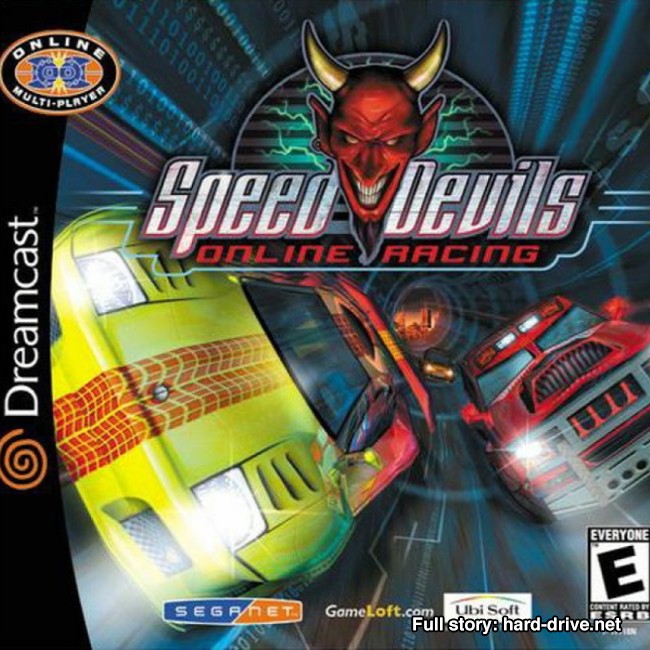 This updated version of Speed Devils, a game I suspect I like more than I should, adds a track and some online features. A pretty standard update to issue a year later, especially at the dawn of online gaming. So I guess that makes Speed Devils Online a little bit better than its predecessor. Some have said that the graphics are a little worse off in this one for some reason, but it’s all two decades old. Who gives a shit? My favorite improvement was the intro, where the devil talks to you about respect. More games could use that, honestly. — M. Roebuck
This updated version of Speed Devils, a game I suspect I like more than I should, adds a track and some online features. A pretty standard update to issue a year later, especially at the dawn of online gaming. So I guess that makes Speed Devils Online a little bit better than its predecessor. Some have said that the graphics are a little worse off in this one for some reason, but it’s all two decades old. Who gives a shit? My favorite improvement was the intro, where the devil talks to you about respect. More games could use that, honestly. — M. Roebuck
#84. Namco Museum
June 25, 2000
Mass Media
Namco

Hey, library guy! I’m happy to present you with the top choice in Dreamcast arcade collections. Namco Museum sets itself apart with its excellent game selection, featuring six truly iconic titles. Sure, it doesn’t have the cool museum presentation that the PlayStation version had, but when you change the in-game settings, you can watch the dip-switches flip on an animated circuit board. I know you like fiddling with simple electronics! The games are as fun as they’ve always been, even if there are no surprises — well, maybe one surprise. If your VMU is still working, you can try out the bonus Pac-Man minigame. It’ll give you minutes of fun until you return to composing your manifesto and sending suspicious packages to modern game developers! — K. Duggan
#83. Star Wars Episode 1: Jedi Power Battles
October 4, 2000
LucasArts
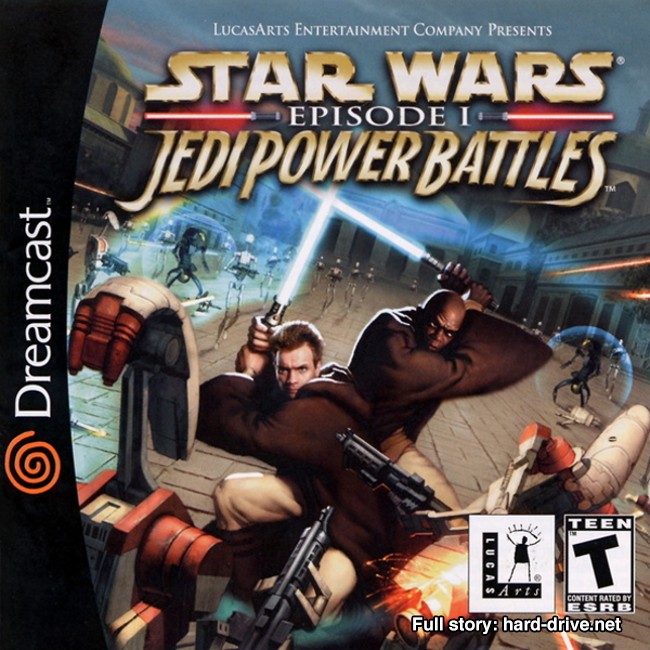 I was ready to give this a perfect score after turning this game on for the first time in years; I forgot the first thing you hear on the game is the best Star Wars song in existence, Duel of The Fates, played over a pretty good cutscene showing off a bunch of the game’s playable Jedi Masters.
I was ready to give this a perfect score after turning this game on for the first time in years; I forgot the first thing you hear on the game is the best Star Wars song in existence, Duel of The Fates, played over a pretty good cutscene showing off a bunch of the game’s playable Jedi Masters.
I will not give it a perfect score on that alone, though. This is a just-ok platformer and as good of a side-scrolling brawler. The game does allow you to do my favorite activity in gaming: deflecting laser blasts back at the shooter. Also this game gets props for including Adi Gallia, a lesser-known Jedi who was cool to learn about from her inclusion. This Dreamcast version is apparently the best version of JPB, with better controls, the addition of wookie worrier Ki-Adi-Mundi, and a training mode that barely teaches you how to play. If you liked this as a kid, you’ll be surprised how well it holds up. If you’ve never played this, stick with the modern Jedi: Survivor series for your Star Wars gaming fix. — J. Ruggiero
#82. Sega GT
August 29, 2000
WOW Entertainment
Sega
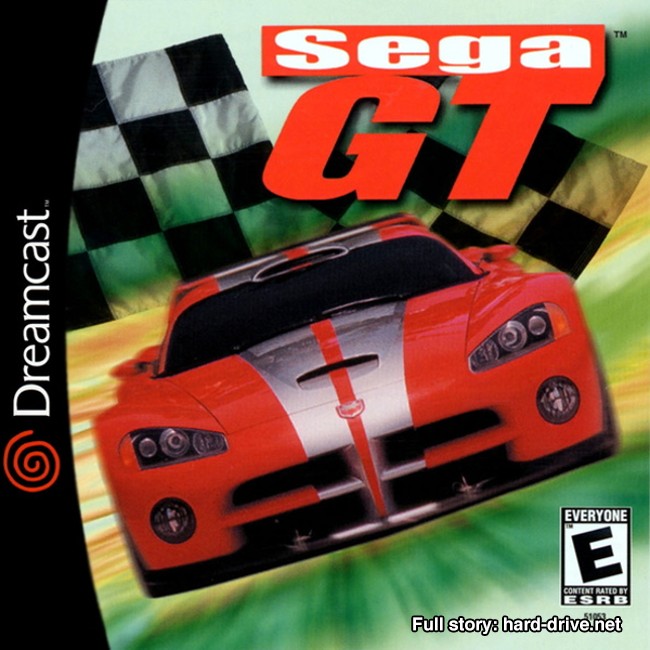 As close as they could legally come to calling a game Sega Gran Turismo, this racing sim has one very obvious inspiration. It’s existence is a little thankless, in the sense that there’s no way Sega GT was ever going to eclipse its obvious source material, but also a little successful, in that playing a mediocre Gran Turismo ripoff is still not a very bad way to spend your time. It’s all very, very familiar. You’ll navigate sleek menus to earn licenses, after which you will be able to buy better and better cars and enter different series of races. You’ll do this for 30 hours and enjoy it the whole time. Fingers crossed Sega puts out a Sega GT movie a few months after the Gran Turismo movie. — M. Roebuck
As close as they could legally come to calling a game Sega Gran Turismo, this racing sim has one very obvious inspiration. It’s existence is a little thankless, in the sense that there’s no way Sega GT was ever going to eclipse its obvious source material, but also a little successful, in that playing a mediocre Gran Turismo ripoff is still not a very bad way to spend your time. It’s all very, very familiar. You’ll navigate sleek menus to earn licenses, after which you will be able to buy better and better cars and enter different series of races. You’ll do this for 30 hours and enjoy it the whole time. Fingers crossed Sega puts out a Sega GT movie a few months after the Gran Turismo movie. — M. Roebuck
#81. Toy Commander
November 2, 1999
No Cliché
Sega
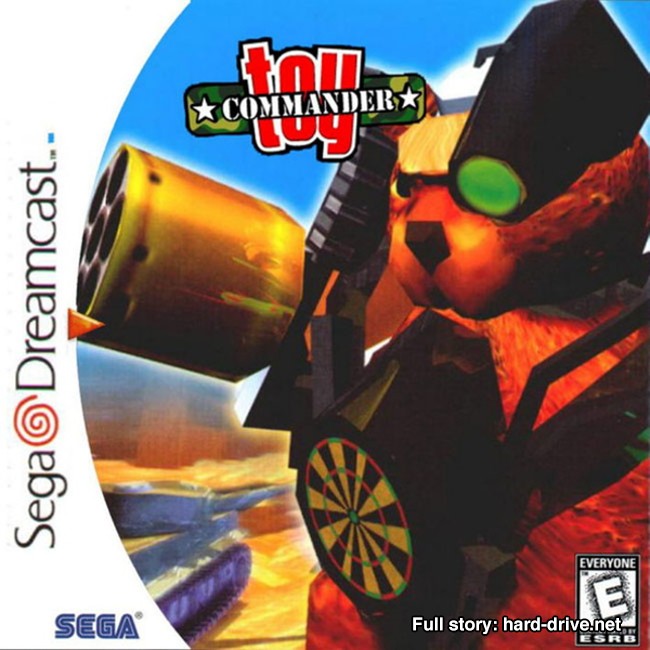 There was a weird genre of games in the 90s and 200s obsessed with making kid-friendly stuff deadly. PlayStation had their extensive Army Men series, while Nintendo released Conker’s Bad Fur Day. One of the Dreamcast’s entries in this genre (along with Fur Fighters) was Toy Commander, a vehicle-based third-person action game putting you in the seats and cockpits of various toy shop models. It feels like a kid’s imagination bottled up and distilled into a video game. The Toy Story-like story of these toys involves a kid (named Andy, not kidding) ignoring his former playthings in favor of a new set of military toys he just got. Each level is a different room in a suburban home where you must complete missions with tanks, helicopters, and planes. You’ll use your miniature military might to stop transforming robots, teddy bears, and a pirate ship from destroying the new toys. A wide variety of fun-to-control vehicles and a premise that is great, even though it’s taken directly from a Disney movie, make Toy Commander a pleasure to spend playtime with. — J. Ruggiero
There was a weird genre of games in the 90s and 200s obsessed with making kid-friendly stuff deadly. PlayStation had their extensive Army Men series, while Nintendo released Conker’s Bad Fur Day. One of the Dreamcast’s entries in this genre (along with Fur Fighters) was Toy Commander, a vehicle-based third-person action game putting you in the seats and cockpits of various toy shop models. It feels like a kid’s imagination bottled up and distilled into a video game. The Toy Story-like story of these toys involves a kid (named Andy, not kidding) ignoring his former playthings in favor of a new set of military toys he just got. Each level is a different room in a suburban home where you must complete missions with tanks, helicopters, and planes. You’ll use your miniature military might to stop transforming robots, teddy bears, and a pirate ship from destroying the new toys. A wide variety of fun-to-control vehicles and a premise that is great, even though it’s taken directly from a Disney movie, make Toy Commander a pleasure to spend playtime with. — J. Ruggiero
#80. NBA2K
November 11, 1999
Visual Concepts
Sega
 Visual Concepts’ debut basketball game on the console is impressive, and was well received, but also NFL2K which came out a few months earlier was so well received that people were also a little like, “So that’s it huh, just the solid basketball game?” If it impresses more today than it did upon its release, perhaps it’s because the strides towards realism also serve to give the game a slower, realistic pace. Thus, the game doesn’t so much scream “Hey, buckle up and get your balls blown off by these 128-bit graphics” so much as it screams “Hey, make sure you run your sets because Tim Duncan and David Robinson are a combined 14 feet tall and you’re not gonna get in the paint easily against San Antonio!” — M. Roebuck
Visual Concepts’ debut basketball game on the console is impressive, and was well received, but also NFL2K which came out a few months earlier was so well received that people were also a little like, “So that’s it huh, just the solid basketball game?” If it impresses more today than it did upon its release, perhaps it’s because the strides towards realism also serve to give the game a slower, realistic pace. Thus, the game doesn’t so much scream “Hey, buckle up and get your balls blown off by these 128-bit graphics” so much as it screams “Hey, make sure you run your sets because Tim Duncan and David Robinson are a combined 14 feet tall and you’re not gonna get in the paint easily against San Antonio!” — M. Roebuck
#79. Heavy Metal: Geomatrix
September 12, 2001
Capcom
 When I was a kid, I was a fan of Heavy Metal in the same way that anti-prohibition bootleggers were businessmen. Everything I read or saw of Heavy Metal was done in secret, hopeful that the watchful eye of authority would never catch on to what I was doing. While I enjoyed what little HM content I could get, like the two films or various magazine issues, somehow the fact of this game’s existence eluded me until I started working on these reviews.
When I was a kid, I was a fan of Heavy Metal in the same way that anti-prohibition bootleggers were businessmen. Everything I read or saw of Heavy Metal was done in secret, hopeful that the watchful eye of authority would never catch on to what I was doing. While I enjoyed what little HM content I could get, like the two films or various magazine issues, somehow the fact of this game’s existence eluded me until I started working on these reviews.
Eager to ride the wave of arena fighters like Power Stone and Super Smash Bros., Heavy Metal: Geomatrix presents itself as an adult-themed cyberpunk alternative. While having nothing to do with any previous HM story, the Geomatrix world certainly apes the style of the Kevin Eastman-created publication. Geomatrix’s fighters are parts of three distinctive gangs vying for land in a ravaged future. Each gang is distinct, from faux-medieval knights to psychopunk terrors, has three members each, and gets access to an array of guns and weapons in large battle arenas. While not as polished as Stone or Smash, fans of Heavy Metal might get a kick out of this and its amazing soundtrack. — J. Ruggiero
#78. JoJo’s Bizarre Adventure
October 31, 1999
Capcom

The manga series JoJo’s Bizarre Adventure failed to gain mass popularity worldwide until it received a rebooted anime series in the early 2010s, despite being wildly popular in Japan since its inception in the late 1980s. Up until then, in America, our knowledge of anything JoJo’s was mostly limited to this game, which is a port of an arcade title. I remember seeing this game at the arcade and thinking, “how bizarre, how bizarre”. Nah man I didn’t say that, but it would have been kinda funny if I did.
The story of the game follows the plot beats of “Part 3” of the series, otherwise known as Stardust Crusaders. You can choose from several characters who appear during this story arc, and fight through a series of arcade mode matches. The game was developed by the same team responsible for Street Fighter III, but sets itself apart from most other games in the genre by including a unique “Stand” system. Stands range from being magical punching ghosts, to handguns, to things much, much more complicated. Each Stand has its own mini health bar though, so you don’t want to lean on them too heavily. If you do, you might actually have to throw a punch at someone for real. — K. Podas
#77. NHL 2K2
February 14, 2002
Treyarch
Sega
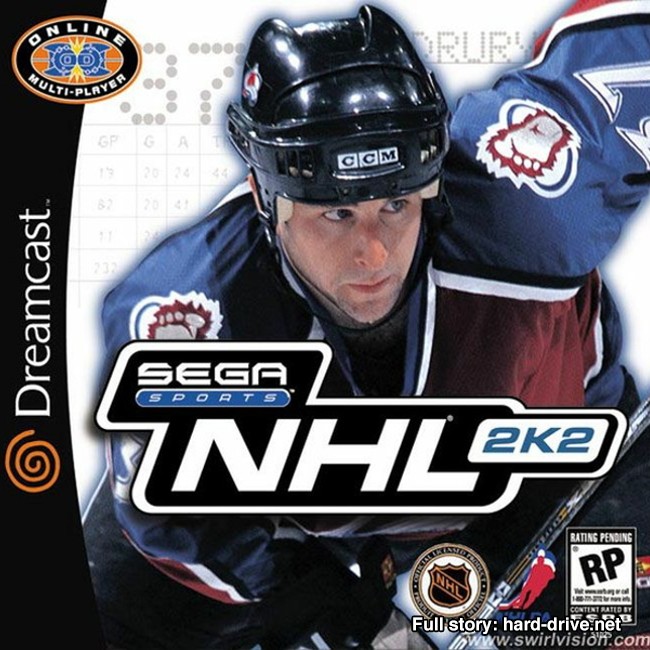
Sega had two years to improve on the original NHL 2K, and they kinda did. Sorta. In a few ways. The game certainly plays faster, even if both the controls and the AI are still a bit wonky. It remains a bare bones experience, without many features and options that had become almost standard in sports titles by 2002. Most of the other changes feel like nitpicks. The backhand shot got a huge buff, and the poke-check is probably a bit too effective now. There’s also this really grating skating sound effect that plays all the time that reminds me of this Batman electronic storybook I had as a kid. I think it had something to do with a missing egg? Anyway, NHL 2K2 is a decent enough improvement over its predecessor, which was a decent enough game. In that sense, it’s the NHL2K of sequels: just good enough to justify its own existence. If you were a hockey fan and had a Dreamcast, you would have had a good time with this. — K. Duggan
#76. Sega Bass Fishing
October 6, 1999
Sims
Sega
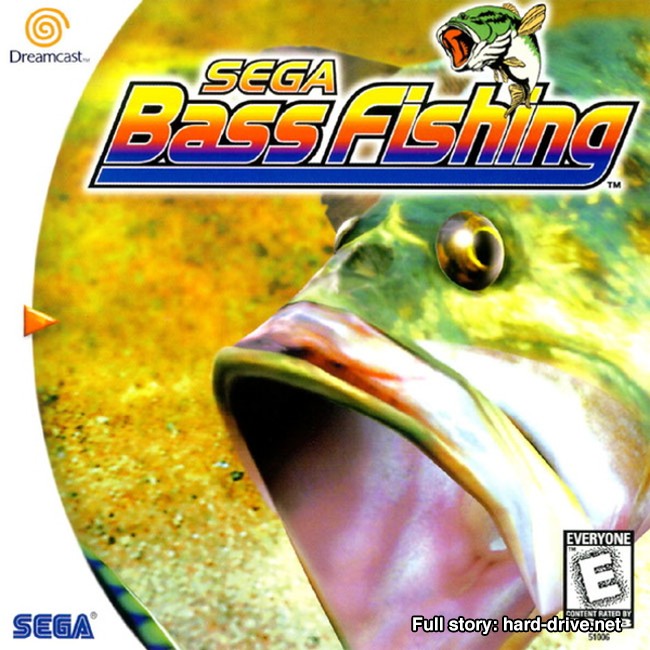 Sega Bass Fishing was a hit in arcades and bars across America where players could get a bit sloshed and then dump quarters into the cabinet for bragging rights. It utilized a physical reel that Sega adopted when the game was ported to the Dreamcast. Now players could practice at home before going to the bar on Saturday and totally thrashing Dave.
Sega Bass Fishing was a hit in arcades and bars across America where players could get a bit sloshed and then dump quarters into the cabinet for bragging rights. It utilized a physical reel that Sega adopted when the game was ported to the Dreamcast. Now players could practice at home before going to the bar on Saturday and totally thrashing Dave.
The weirdest thing is how enthusiastic and energetic the game is. It’s such a stark contrast to have rock music kick up and an announcer with a thick accent cheer you on while doing one of the most boring hobbies out there. However, that energy is infectious. It turns fishing into this huge dopamine rush when you’re fighting with and eventually land a “big one.” There is a bit of a learning curve when it comes to competing in the in-game tournaments but this can be offset by putting some time in the Practice and Arcade modes. There, players will learn what each lure does, where to use them, and how to effectively reel in the fish. It’s an incredibly rewarding experience and makes for an excellent party game thanks to its timed modes and scoring system. Whether you’re looking to have fun with friends or are more into the solo performance, you can do far worse than Sega Bass Fishing. — C. Dawson
#75. Wetrix+
December 16, 1999
Zed Two
Acclaim
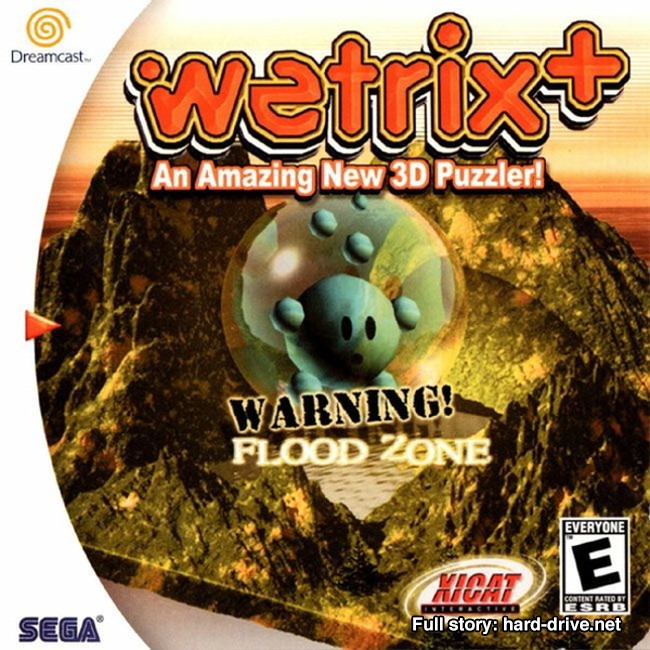 Despite the “plus” in the title, this is just a port of the same game that was released on the N64. It just came out a full year-and-a-half afterwards, I suppose to satiate the ravenous Dreamcast hordes desperate for a puzzle game at Christmastime. Any who chose to eat from the Wetrix+ table were eatin’ good, though.
Despite the “plus” in the title, this is just a port of the same game that was released on the N64. It just came out a full year-and-a-half afterwards, I suppose to satiate the ravenous Dreamcast hordes desperate for a puzzle game at Christmastime. Any who chose to eat from the Wetrix+ table were eatin’ good, though.
If you missed it the last time we talked about it, Wetrix is an isometric Tetrislike but instead of dropping blocks and clearing out rows when they complete, your task is to drop blocks to create ridges, perimeters, and generally change the landscape of Earth so that “when the great deluge comes,” it can hold water. It has got to be one of the strangest, most unique puzzle games ever and I was absolutely shit at it. But it was the first time in a long time, really, that I actually had a lot of fun trying to learn something so frustrating and against my gamer brain habits. I loved how terrible I was at it and I’m probably gonna keep loving and being terrible at it long after the check clears for this article. — W. Quant
#74. F355 Challenge: Passione Rossa
September 18, 2000
AM2 of CRI
Acclaim Entertainment
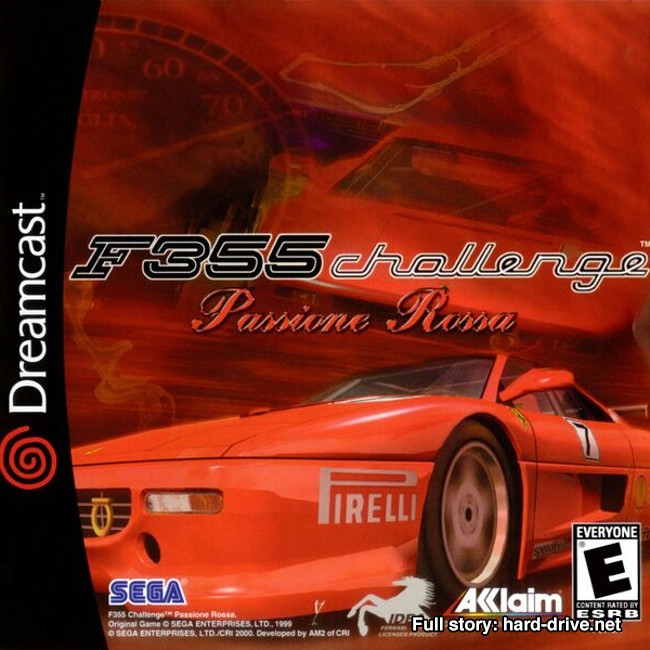
F355 Challenge: Passione Rossa is a complicated game. On the one hand, it’s a solid racing game. On the other hand, it only features a single model of car, the Ferrari F355. On a third hand, Gran Turismo 2 had already come out and was absolutely dominating the racing scene. On the fourth hand (Goro), Gran Turismo 2 was never made available on the Dreamcast.
Despite being absolutely lousy with racers, many of which were middling at best, the Dreamcast did have some gems with F355 being one of them. It scratches the basic racing itch for casual fans. Those that want a more involved or hardcore racing experience should look elsewhere. Those that have a raging hard-on for Ferrari should be adequately satisfied. It’s a divisive game depending almost entirely on how much you care about certain things. For those that opt in, F355 has a fantastic UI that makes all of the information readily available. The cars handle extremely well, especially when compared to other titles of the time. There is a potential hurdle for some players with the game lacking a third-person view. To offset that, F355 does implement a very handy top-down grid that shows the placement of neighboring cars.
While I might not be the biggest fan of Ferrari, I have to respect this game. It’s well-made and holds up exceptionally well. The Dreamcast library is as full of turds as a festival porta-potty but F355 is one of those gems that made the console a darling. — C. Dawson
#73. Mars Matrix
April 25, 2001
Takumi Corporation
Capcom

In typical fashion for the Dreamcast, Mars Matrix began as an arcade game before being ported over to Sega’s last console. However, unlike many of the ported titles that made the jump from quarter-gobbling dens rife with body odor, Mars Matrix is actually really good.
It’s your standard bullet hell shooter. Players choose from one of two vehicles and must do their best to shoot down as many targets as possible while avoiding the litany of projectiles filling the screen. There’s a slight RPG system in place where players are able to level up, thus increasing the damage they do. This is influenced by cubes that are dropped from damaged and destroyed enemies. These cubes also dictate how combos work in the game and how quickly certain attacks can be used. It’s not much, but it adds a nice risk versus reward system.
Bullet hell shooters really aren’t my thing, but Mars Matrix was such a breath of fresh air compared to the loads of shovelware in the Dreamcast library that it was instantly endearing. For having the audacity to be both different and good, it deserves a spot in your Dreamcast collection. — C. Dawson
#72. Sega Rally 2
November 30, 1999
Smilebit
Sega
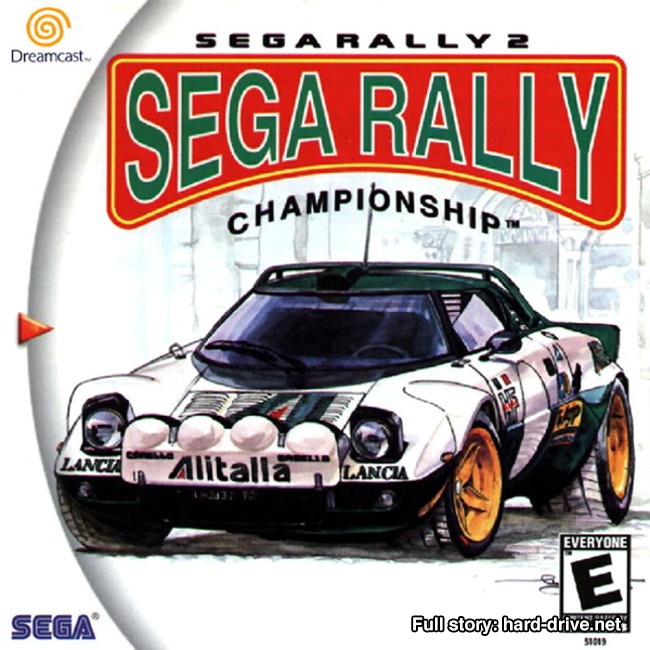 This is a surprisingly fun racing game for rally enthusiasts and/or gamers with controllable tempers. It’s hard. You’ll replay the same tracks over and over trying to shave fractions of seconds off of your lap time. You’ll last about a month in the 10 Year Championship mode. You’ll turn off the Sega Dreamcast and get in your car and drive it in circles around your house, trying to gleam insights into the physics of drift racing. You’ll fuck up your lawn. You’ll unconvincingly appear on local media and blame the damage to your lawn on local Satanists. You’ll try another 10 Year Championship and get a little farther. You’ll find yourself enjoying the process, for this is a challenging game that rewards patience. Despite an average look, underwhelming tracks, and questionable crowd graphics, there’s some reality good stuff in here. I appreciated the announcer giving me verbal heads ups about what turns were coming up (even though I also made him yell “oh no!” a lot with my ‘is that guy driving with his knees?’ style of rally racing), and the different types of terrain and weather conditions add depth to an already very replayable game. — M. Roebuck
This is a surprisingly fun racing game for rally enthusiasts and/or gamers with controllable tempers. It’s hard. You’ll replay the same tracks over and over trying to shave fractions of seconds off of your lap time. You’ll last about a month in the 10 Year Championship mode. You’ll turn off the Sega Dreamcast and get in your car and drive it in circles around your house, trying to gleam insights into the physics of drift racing. You’ll fuck up your lawn. You’ll unconvincingly appear on local media and blame the damage to your lawn on local Satanists. You’ll try another 10 Year Championship and get a little farther. You’ll find yourself enjoying the process, for this is a challenging game that rewards patience. Despite an average look, underwhelming tracks, and questionable crowd graphics, there’s some reality good stuff in here. I appreciated the announcer giving me verbal heads ups about what turns were coming up (even though I also made him yell “oh no!” a lot with my ‘is that guy driving with his knees?’ style of rally racing), and the different types of terrain and weather conditions add depth to an already very replayable game. — M. Roebuck
#71. MDK 2
March 29, 2000
BioWare
Interplay
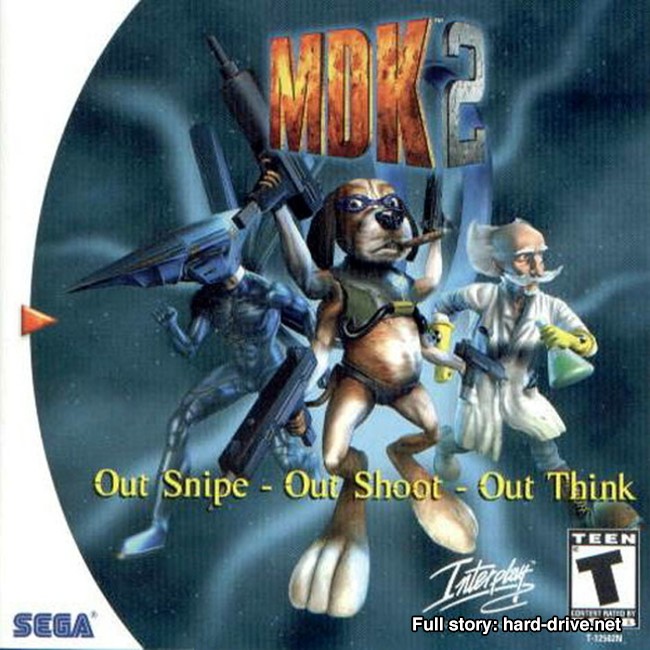
I remember when I got my Dreamcast, there was a demo disc that came with it. It had titles like Sonic Adventure, Dead or Alive 2, and MDK 2. That last one was so profoundly weird and fun that it stuck with me for the next 20 years. Fast forward to now and I’m finally able to play the full version. I was surprised to see that both BioWare and Interplay had teamed up for this one. Suffice it to say, what they produced is brilliant when it’s not busy ignoring your safe word.
MDK 2 has the feel of a pulpy indie comic from the early 90s. There’s a janitor with a sniper rifle helmet. There’s a badass dog with six arms. There’s your stereotypical mad doctor who only wants to stop an alien invasion out of ego. It’s all great stuff. Aside from the compelling characters and humor, there’s a gorgeous game with intriguing systems. It’s a third-person shooter with an emphasis on sniping but not the level design for it. Most of all though, MDK 2 is brutally hard.
The controls don’t stand the test of time as the left stick controls the camera and the face buttons control movement. Enemies will tear through your health and far too many of them have tracking projectiles. Worst of all, the game utilizes a checkpoint system that is a little too spread out. There’s nothing like attempting a section for the umpteenth time because of arbitrary difficulty or arcane controls.
MDK 2 is enjoyable enough to make players suffer through the frustration. It has the makings of a cult classic and I would love nothing more than to see a modern remake. Until then, it will be the epitome of the Dreamcast: a beautiful but flawed gem that many failed to see. — C. Dawson
#70. Hydro Thunder
September 9, 1999
Eurocom
Midway
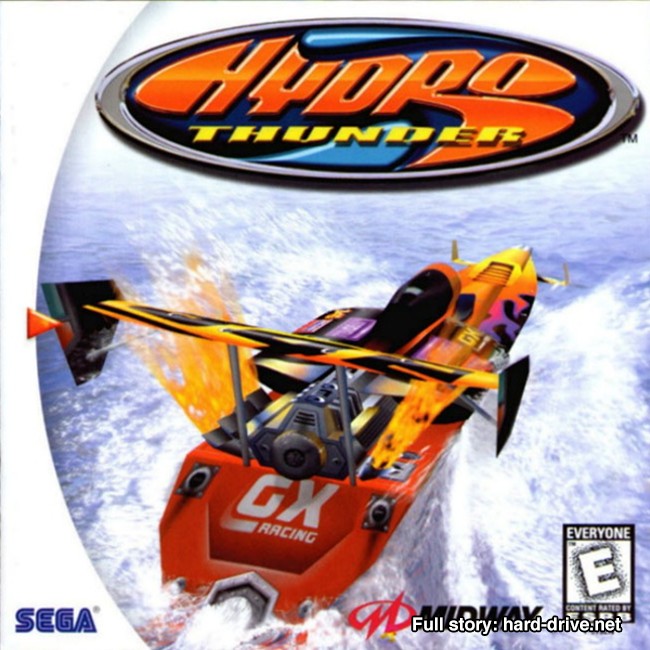 Hey, it’s another Midway arcade port! Which means this is a solid racing title with an announcer that shouts short phrases at you the entire game. Yeah, baby! This game slaps on the Dreamcast, a system better equipped to handle it than the N64 ever was. The speed, the sound, and water are all very impressive here, and despite having arcade origins, Hydro Thunder offers a lot of replayability. There’s also no Wave Race 64 to overshadow it on the Dreamcast. Not the best racing game on the system, but probably the only one that lets you drive a boat past the Titanic, post-iceberg collision. I think that should count for something! — M. Roebuck
Hey, it’s another Midway arcade port! Which means this is a solid racing title with an announcer that shouts short phrases at you the entire game. Yeah, baby! This game slaps on the Dreamcast, a system better equipped to handle it than the N64 ever was. The speed, the sound, and water are all very impressive here, and despite having arcade origins, Hydro Thunder offers a lot of replayability. There’s also no Wave Race 64 to overshadow it on the Dreamcast. Not the best racing game on the system, but probably the only one that lets you drive a boat past the Titanic, post-iceberg collision. I think that should count for something! — M. Roebuck
